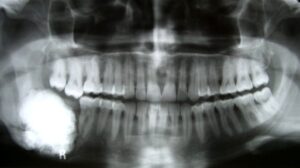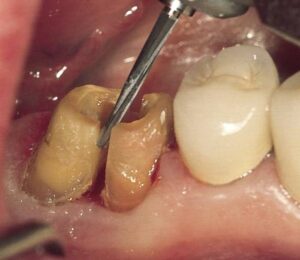Barnet General Medical Center
Contact
Hours
<ul id=”hours” style=”transition: height .3s ease;”>
<li>Monday: 9:00am – 9:00pm</li>
<li>Tuesday: 9:00am – 6:00pm</li>
<li>Wednesday: 9:00am – 9:00pm</li>
<li>Thursday: 9:00am – 9:00pm</li>
<li>Friday: 9:00am – 5:00pm</li>
</ul>
Barnet General Medical Center, located in Buffalo, New York, is a distinguished healthcare institution renowned for its comprehensive range of medical and dental services. The hospital is equipped with cutting-edge technology and staffed by a dedicated team of highly trained animal medical professionals, committed to delivering compassionate and innovative care to all patients.
Medical Services
General Medicine and Surgery
- Emergency Services: Open 24/7, featuring rapid response teams and the latest in emergency medical technology.
- Inpatient and Outpatient Rehabilitation: Full spectrum of rehabilitation services including physical therapy, occupational therapy, and speech therapy.
- Advanced Surgical Care: Specializing in complex surgeries including cardiovascular, neurological, and reconstructive surgery.
Specialized Departments
- Endocrinology: Comprehensive care for diabetes, thyroid disorders, and other hormonal imbalances.
- Gastroenterology: Advanced diagnostic and treatment options for digestive system disorders.
- Nephrology: Expert care for kidney diseases, including dialysis services and transplant preparation.
- Psychiatry and Mental Health: Wide range of mental health services including inpatient care, outpatient therapy, and crisis intervention.
Dental Services
Preventive Dentistry
- Comprehensive Oral Exams: Thorough examinations to detect early signs of dental issues.
- Fluoride Treatments: Preventive treatments to strengthen teeth and prevent decay.
Specialized Dental Care
- Endodontics: Expert root canal therapy to save and restore damaged teeth.
- Cosmetic Dentistry: Advanced procedures including teeth whitening, veneers, and smile makeovers.
- Oral Pathology: Diagnosis and treatment of diseases affecting the mouth, jaws, and related structures.
- Prosthodontics: Specialized care for restoring and replacing teeth with bridges, dentures, and dental implants.
Odontoma
An odontoma is a benign tumor-like growth that develops from dental tissue. It is considered a developmental anomaly rather than a true neoplasm because it consists of mature but disorganized dental tissues. Odontomas are the most common type of odontogenic tumor and are typically slow-growing, non-aggressive lesions that are usually discovered incidentally on dental X-rays or during routine dental examinations.
Here are some key points about odontomas:
- Types: There are two main types of odontomas: compound odontomas and complex odontomas.
- Compound odontomas: These consist of multiple small, tooth-like structures (denticles) arranged in a cluster or grouping, resembling miniature teeth. Compound odontomas often resemble normal tooth structures and may be associated with impacted teeth.
- Complex odontomas: These consist of a disorganized mass of dental tissues, including enamel, dentin, cementum, and pulp, without a recognizable tooth-like structure. Complex odontomas may appear as a radiopaque (dense) lesion on dental X-rays with irregular or indistinct borders.
- Etiology: The exact cause of odontomas is not fully understood, but they are thought to result from disturbances in tooth development during embryogenesis. Factors such as genetic mutations, trauma to the developing tooth bud, or local inflammation may contribute to the formation of odontomas. Odontomas can occur in both primary (baby) and permanent (adult) dentition.
- Clinical Presentation: Odontomas are often asymptomatic and may be discovered incidentally on dental radiographs taken for unrelated reasons. In some cases, odontomas may cause localized swelling or displacement of adjacent teeth if they grow large enough. Rarely, odontomas may impede eruption of adjacent teeth or cause complications such as cyst formation or infection if they become infected or inflamed.
- Diagnosis: Diagnosis of odontomas is typically made based on clinical and radiographic findings. Dental X-rays, including periapical, panoramic, or occlusal views, can help visualize the size, shape, and location of the odontoma within the jaws. In some cases, additional imaging studies such as CT scans or MRI may be necessary to further evaluate the extent of the lesion and its relationship to surrounding structures.
- Treatment: Treatment of odontomas usually involves surgical removal of the lesion, particularly if it causes symptoms, poses a risk to adjacent teeth, or interferes with normal dental development. The procedure is typically performed by an oral and maxillofacial surgeon or a dentist with expertise in oral surgery. Following surgical removal, the prognosis for odontomas is excellent, with low rates of recurrence reported.
In summary, odontomas are benign developmental anomalies that arise from dental tissues and are characterized by the presence of disorganized dental structures. While typically asymptomatic, odontomas may require surgical intervention for removal if they cause symptoms or complications. Early detection and appropriate management are important for maintaining oral health and preventing potential complications associated with odontomas.
Hemisection
Hemisection is a dental procedure in which one half of a tooth is surgically removed, typically due to significant damage or infection in one root or portion of the tooth. It is usually performed on multi-rooted teeth, such as molars, and aims to preserve the remaining healthy portion of the tooth while eliminating the diseased or compromised part.
Here's a detailed explanation of the hemisection procedure:
- Indications:
- Hemisection is indicated when one root or portion of a multi-rooted tooth is extensively damaged or infected, making it non-restorable through conventional means like fillings or root canal therapy.
- Common reasons for hemisection include advanced periodontal disease, root fractures, extensive decay, or trauma to one root of a multi-rooted tooth.
- Preparation:
- Before the procedure, the dentist will conduct a thorough examination of the affected tooth, including clinical assessment and radiographic evaluation, to determine the extent of damage and plan the treatment.
- Local anesthesia is administered to ensure the patient's comfort during the procedure.
- Procedure:
- Tooth isolation: The tooth and surrounding area are isolated using a dental dam or other protective barrier to maintain a clean and sterile environment.
- Tooth sectioning: Using precise dental instruments, the dentist carefully divides the tooth along the furcation (the area where the roots meet) to separate the healthy portion from the diseased or damaged portion.
- Root removal: The affected root or portion of the tooth is surgically removed, along with any associated infection, debris, or damaged tissue. The remaining healthy root(s) and surrounding bone are preserved.
- Root canal therapy: If the remaining root(s) require root canal treatment, it may be performed to remove any remaining infected or inflamed tissue and seal the root canal space.
- Restoration: After root removal and root canal therapy (if needed), the remaining portion of the tooth is restored with a filling material or crown to restore function and aesthetics.
- Postoperative Care:
- Following the procedure, the patient may experience some discomfort or swelling, which can be managed with pain medication and cold compresses applied to the outside of the cheek.
- Patients are advised to follow postoperative instructions provided by the dentist, including dietary restrictions, oral hygiene practices, and any prescribed medications.
- Regular follow-up appointments are scheduled to monitor healing, assess the stability of the remaining tooth structure, and address any concerns or complications.
- Prognosis:
- The success of hemisection depends on various factors, including the extent of damage or infection, the patient's oral hygiene, and compliance with postoperative care instructions.
- With proper care and maintenance, a tooth that has undergone hemisection can continue to function effectively for many years, providing chewing function and aesthetics similar to a natural tooth.
In summary, hemisection is a dental procedure performed to remove one half of a tooth, typically due to significant damage or infection in one root or portion of the tooth. It aims to preserve the remaining healthy portion of the tooth while eliminating the diseased or compromised part, allowing for continued function and stability. If you have a tooth that may require hemisection or if you have any questions about the procedure, it's important to consult with your dentist for a thorough evaluation and personalized treatment plan.




